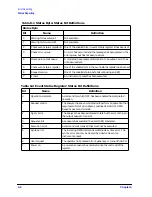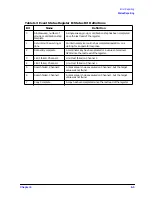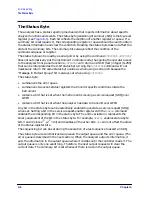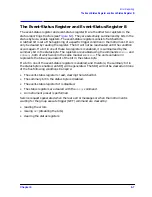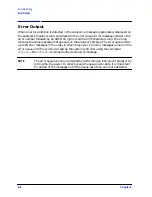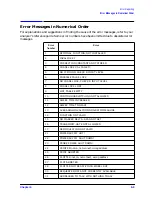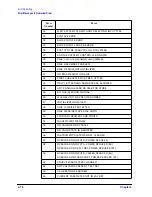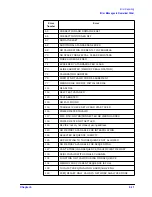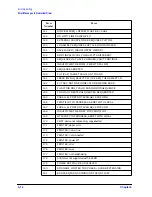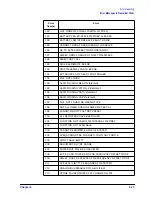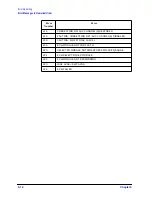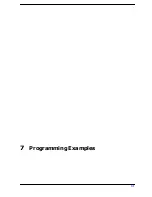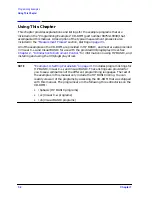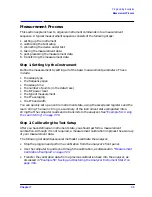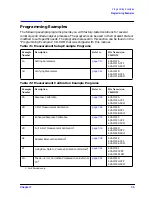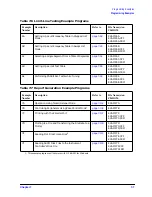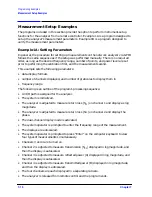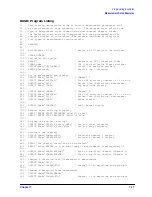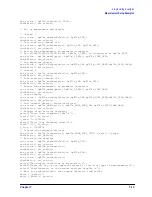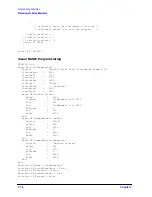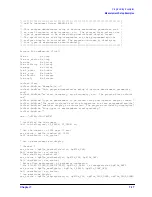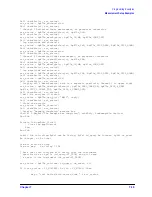
7-4
Chapter 7
Programming Examples
Measurement Process
Step 3. Connecting the Device under Test
After you connect your test device, you can use the computer to speed up any necessary
device adjustments such as limit testing, bandwidth searches, and trace statistics.
Step 4. Taking the Measurement Data
Measure the device response and set the analyzer to hold the data. This captures the data
on the analyzer display.
By using the single-sweep command (
SING
), you can ensure a valid sweep. When you use
this command, the analyzer completes all stimulus changes before starting the sweep, and
does not release the GPIB hold state until it has displayed the formatted trace. Then when
the analyzer completes the sweep, the instrument is put into hold mode, freezing the data.
Because single sweep is OPC-compatible, it is easy to determine when the sweep has been
completed.
The number-of-groups command (
NUMGn
) triggers multiple sweeps. It is designed to work
the same as single-sweep command.
NUMGn
is useful for making a measurement with an
averaging factor
n
(
n
can be 1 to 999). Both the single-sweep and number-of-groups
commands restart averaging.
Step 5. Post-Processing the Measurement Data
shows the process functions used to affect the data after you have
made an error-corrected measurement. These process functions have parameters that can
be adjusted to manipulate the error-corrected data prior to formatting. They do not affect
the analyzer's data gathering. The most useful functions are trace statistics, marker
searches, electrical-delay offset, time domain, and gating.
After performing and activating a full 2-port measurement calibration, any of the four
S-parameters may be viewed without taking a new sweep (ES models only).
Step 6. Transferring the Measurement Data
Read your measurement results. All the data-output commands are designed to ensure
that the data transmitted reflects the current state of the instrument.
Содержание 8719ES
Страница 15: ...1 1 1 Alphabetical Command Reference ...
Страница 293: ...2 1 2 Introduction to Instrument Control ...
Страница 310: ...3 1 3 GPIB Programming ...
Страница 334: ...4 1 4 Reading Analyzer Data ...
Страница 343: ...5 1 5 Data Processing Chain ...
Страница 350: ...6 1 6 Error Reporting ...
Страница 364: ...7 1 7 Programming Examples ...
Страница 502: ...A 1 A Preset Conditions ...
Страница 517: ...B 1 B Command Listings ...

